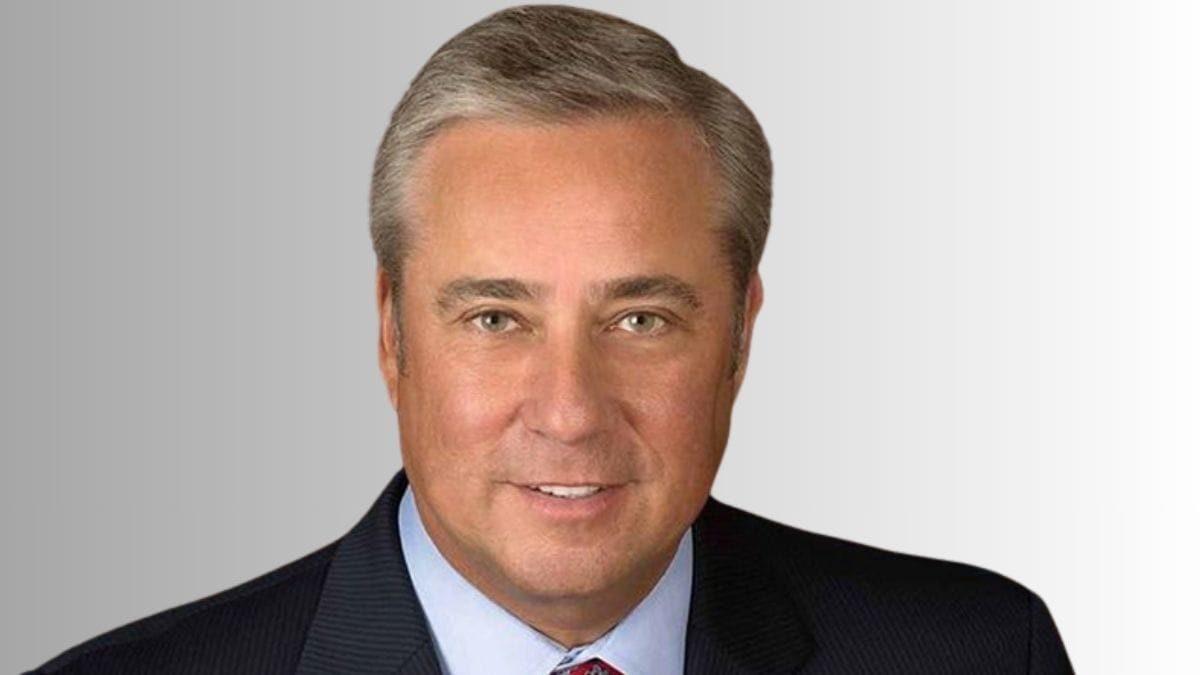Nexstar’s Perry Sook Bets On Rule Changes, Blasts 'Antiquated' Measurement
Broadcaster bets ownership caps will be lifted so viewers don’t have to listen to ‘chat bots’ deliver the local news

Nexstar’s Perry Sook wants to grow, and he ain’t waiting for Washington.
He also blamed measurement companies for TV’s falling behind digital competition for advertising revenue.
It used to be rules are rules. But in the TV business, apparently that’s not true any more.
Giant broadcaster Nexstar on Tuesday announced that it agreed to acquire Tegna, another very large broadcaster, in a deal valued at $6.2 billion.
The investment in broadcasting is an interesting one at a time when viewers are turning to streaming. Even as Nexstar was explaining its deal to Wall Street, Nielsen was releasing new figures showing that streaming was getting close to a 50% share of TV usage. One could argue that Nielsen’s national data doesn’t account for local broadcast, but . . . .
It got even more interesting when Nexstar and Sook estimated that the combination of Nexstar and Tegna would own 265 full-power TV stations in 132 markets serving 80% of the country. That’s curious because current regulations cap station ownership at 39%.
On a Nexstar’s call with analysts, Sook was undaunted by the cap. “We feel very, very positive about moving forward with the regulatory approval process,” he said.
Sook noted that the FCC’s comment period for revising the ownership cap will end this week and that a Federal court in July overturned the prohibition against one company owning two of the top four rated stations in a marketplace.
“We expect that all of those processes will move forward during the pendency of the transaction, so we feel very confident, as I said earlier, we’re meeting this regulator moment where it is and we will work together with regulators as they consider modifying and repealing outdated rules and regulations,” Sook said.
“We’re grateful that [FCC] Chairman Carr and the Trump administration recognize the need for meaningful regulatory relief, lifting that ownership cap and revising the market ownership rules,” he added. (Grateful enough to give up a 10% stake in Nexstar to the government, like the administration is reportedly seeking from chipmaker Intel?)
The regulatory relief is necessary because of the way the digital giants are riding roughshod over local broadcasts hamstrung by restrictive regulation.
Over the course of this year, “I’ve spent a lot of time in Washington, D.C. both on the Hill and at the regulator agencies,” Sook noted. “Particulary on the Hill, everybody gets it. Nobody can defend the current rules as they stand.”
Sook said Nexstar has even hired a squad of economists to bolster its case.
Sook also said Nexstar taking over Tegna was in the public interest. “We think we are the last bastion of local journalism,” he said, noting that the digital giants don’t spend money on news and reporting. “We don’t think anyone wants their news delivered by a chat bot.”
As far as advertising is concerned, Sook said “there’s no reason that broadcast as an industry needs to lose share.”
On the call, Sook pointed to data showing that digital advertising in local markets generated $100 billion in revenue in 2024, while local linear TV brought in just $25 billion.
He said the broadcast’s reach creates a value proposition recognized by sports leagues, advertisers and markets.
“It’s just that we have an antiquated and inaccurate measurement,” Sook said without naming a specific ratings company. (Nexstar signed deals with Nielsen and Comscore in January 2024.)
“We have antiquated business processes that, quite frankly, make it more profitable for advertising agencies to place money digitally than with broadcast,” he added. “We have a vested interest and a sense of urgency to figure his out, to begin to evolve to impression-based selling and outcome-based selling.”
Sook has run Nexstar for decades, building it through a series of 40 acquisitions. And he was particularly proud of this deal.
“Today’s announcement is a moment that I’ve been waiting for since founding Nexstar almost 30 years ago, a rare opportunity to take a major step forward in shaping the future of our business and of the local broadcast industry,” he said.
“We’ve surveyed the landscape for potential acquisitions and while the market is ripe with other opportunities, Tegna is the ideal partner for Nexstar and vice versa,” Sook said.
# # #
Viant said it made a deal with Wurl to deliver scene-level contextual advertising in connected TV. Viant said Wurl are using IRIS-TV’s IRIS_ID, combined with Wurl’s BrandDiscover signals to deliver this capability.
“As the first DSP to offer scene-level targeting and measurement capabilities, we are powering a new generation of privacy-safe, contextually relevant advertising that benefits the entire ecosystem,” said Tom Wolfe, senior VP of business development at Viant. “The partnership with Wurl helps fulfill our mission to drive meaningful outcomes for our advertisers, and across the CTV landscape by addressing persistent challenges like fragmented targeting, limited measurement and lack of content transparency.”
The companies are also using Viant’s new Open Real Time Bidding to unlock inventory on free ad-supported streaming television (FAST) channels from top publishers.
All of this effort pays off for advertisers with greater reach, relevance and efficiency, the companies said.
“With BrandDiscovery and IRIS IDs enabled across the Wurl footprint and fully integrated into Viant’s DSP, a biddable contextual solution is now activated at unbelievable scale. Advertisers can reach streaming audiences while also aligning their creative with relevant content. Contextual relevance has been proven to drive results – better campaign performance and ROAS for advertisers, and incremental revenue for publishers.”said Ria Madrid, VP of advertising partnerships at Wurl.

